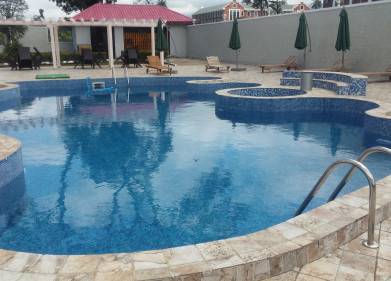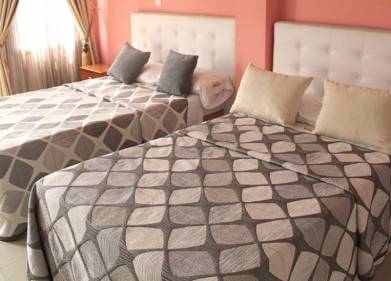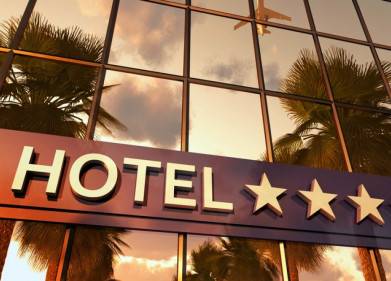Formerly the colony of Spanish Guinea, Equatorial Guinea gained Independence on 12 October 1968. It consists of two parts, an insular and a mainland region. The country's capital, Malabo is located in the insular region. The mainland region, Río Muni, is the location of Bata, Equatorial Guinea's largest city.
Before independence Equatorial Guinea exported cocoa, coffee and timber, mostly to its colonial ruler, Spain, but also to Germany and the UK. CFA franc is the country’s currency. Since the mid-1990s, Equatorial Guinea has become one of sub-Saharan Africa's largest oil producers. It is the richest country per capita in Africa.
Human trafficking is a significant problem in the Equatorial Guinea and it is a source and destination for women and children subjected to forced labor and forced sex trafficking.
Equatorial Guinea has a tropical climate with distinct wet and dry seasons. From June to August, Río Muni is dry and Bioko is wet while from December to February, the reverse occurs. In between there is gradual transition. Rain or mist occurs daily on Annobón, where a cloudless day has never been registered, but Río Muni is somewhat drier.
Due to the large oil industry in the country, internationally recognized carriers fly to Malabo International Airport which, in May 2014, had several direct connections to Europe and West Africa. There are three airports in Equatorial Guinea — Malabo International Airport, Bata Airport, and the new Annobon Airport on the island of Annobon.
For years, the official languages were Spanish and French. Portuguese was also adopted as an official language in 2010. Spanish has been an official language since 1844. French was only made official in order to join the Francophonie and it is not locally spoken, except in some border towns. Indigenous languages include Fang, Bube, Benga, Ndowe, Balengue, Bujeba, Bissio, Gumu, Igbo etc.
The principal religion in Equatorial Guinea is Christianity, the faith of 93% of the population. Roman Catholics make up the majority (87%), while a minority are Protestants (5%). 2% of the population follows Islam (mainly Sunni). The remaining 5% practice Animism, Bahá' Faith, and other beliefs.
Under President Obiang, the illiteracy rate dropped from 73% to 13%, and the number of primary school students rose from 65,000 in 1986 to more than 100,000 in 1994. Education is free and compulsory for children between the ages of 6 and 14. The country has one university, the Universidad Nacional de Guinea Ecuatorial (UNGE), with a campus in Malabo and a Faculty of Medicine located in Bata on the mainland.
The principal means of communication within Equatorial Guinea are three state-operated FM radio stations. There is also an independent radio called Radio Macuto, the voice of the voiceless.
There is little popular music coming out of Equatorial Guinea. Pan-African styles like soukous and makossa are popular, as are reggae and rock and roll. The Fang are known for the mvet, an instrument that looks like a cross between a zither and a harp, and can have up to fifteen strings. Music for the mvet is written in a form of musical notation that can only be learned by initiates of the bebom-mvet society.
One of the country's most famous celebrations is the abira, which is believed to cleanse the community of evil. The balélé dance is performed along the coast throughout the year and on Bioko around Christmas.
Monte Alen National Park is the largest park and protected area. It is home to elephants, chimpanzees, and gorillas. It has an area of 2,000 square kilometers with 105 different mammal species with primates taking a giant share. However, the Goliath frog is the most famous of them all. These frogs can grow up to 32 cm long and weigh up to 3.25 kilos.
Fun places to visit in Equatorial Guinea include;
Cathedral de Santa Isabel: Also known as St. Elizabeth’s cathedral, is located in Malabo and is considered the largest Christian/catholic church in the nation.
The Malabo National Park: This is a very beautiful park with many side attractions. It is a nice place for relaxation.
Nuevo Estadio de Malabo: This is a multi-purpose stadium in Malabo and is currently used for mostly football matches.
Bata Cathedral: It is located in the largest city in the country, Bata.
Located in Malabo, is a prominent landmark and is also a home to a number of businesses.
Catedral Basilica de La Immaculada Concepcion: This is a roman catholic Basilica situated in Mongomo. It is the largest basilica in central Africa.
Centro Cultural de Espana en Malabo (CCEM): Offers Spanish courses as well as other events such as concerts, films, etc.
Moca: Moca valley is on the south of Bioko













